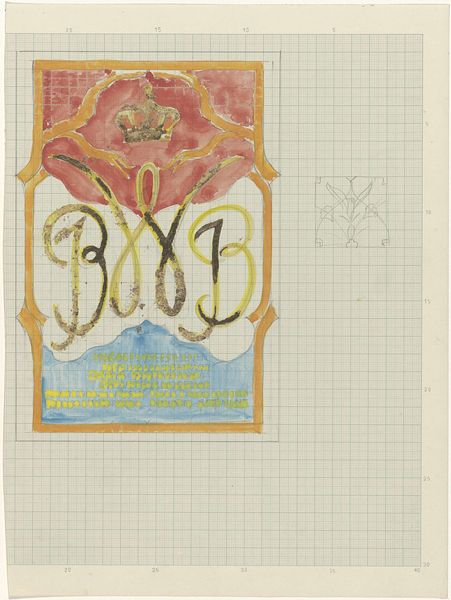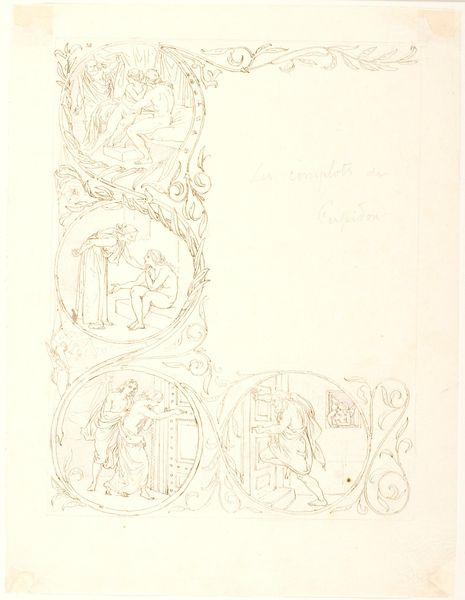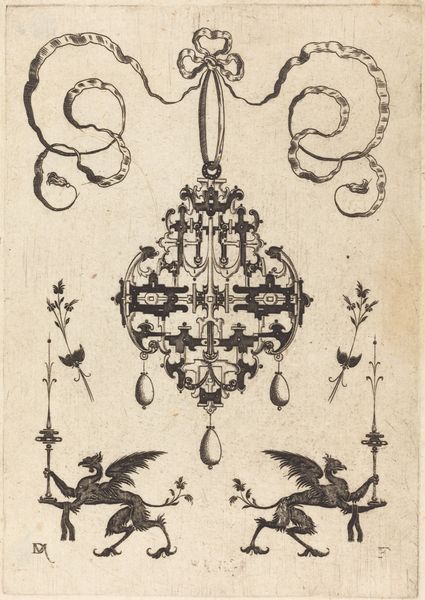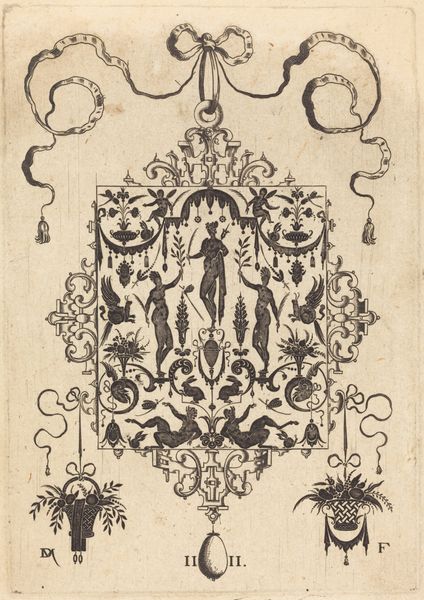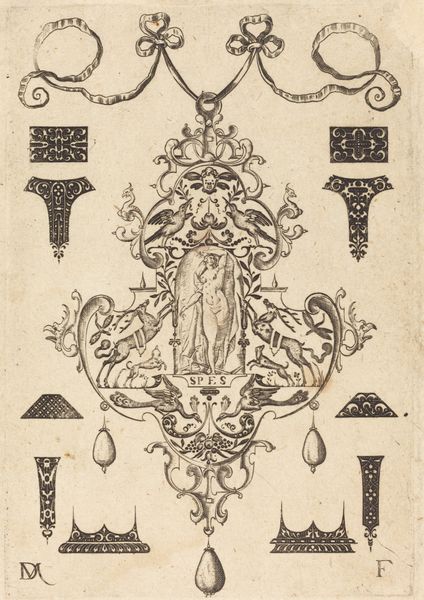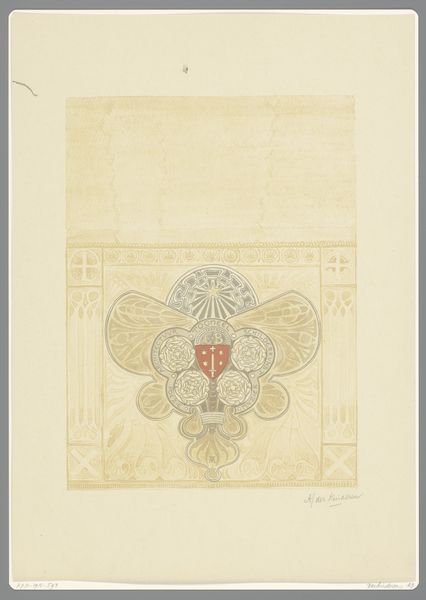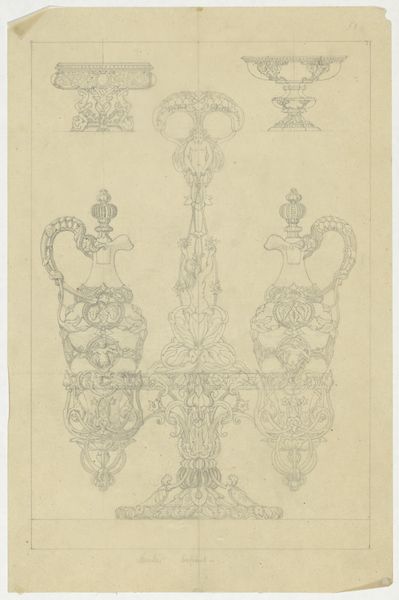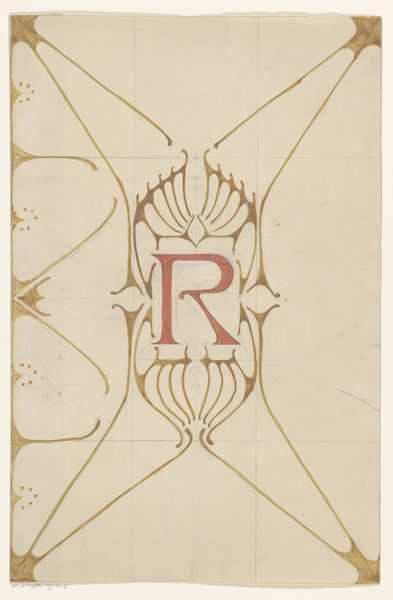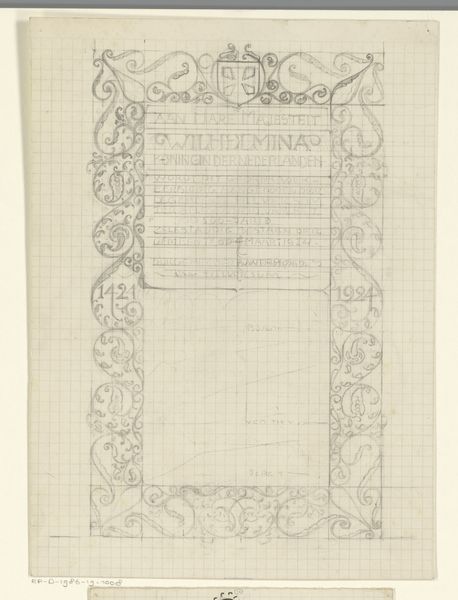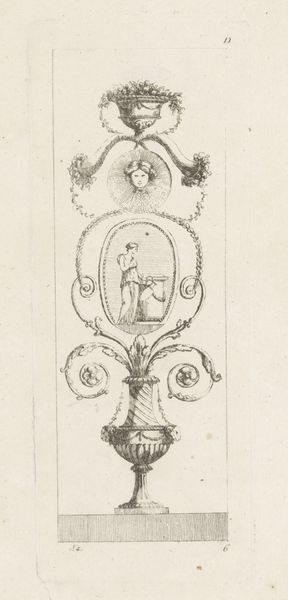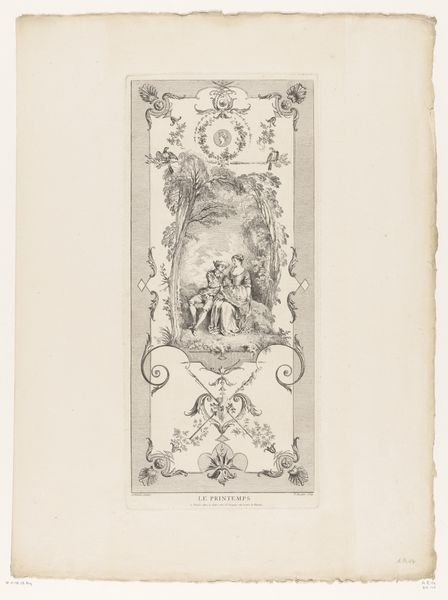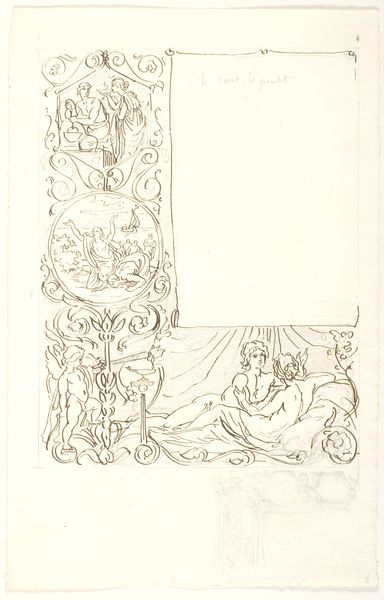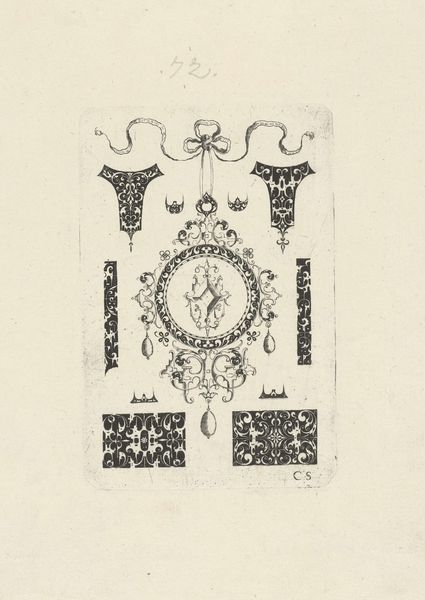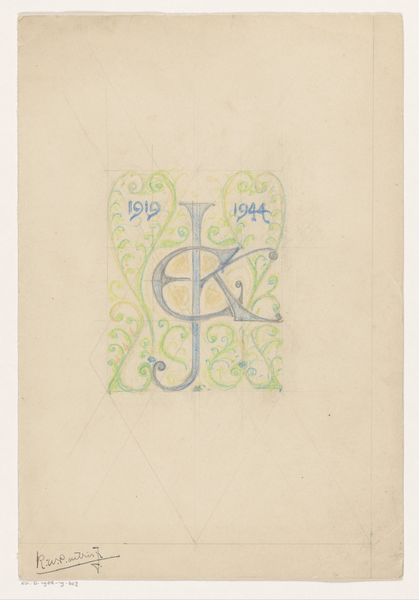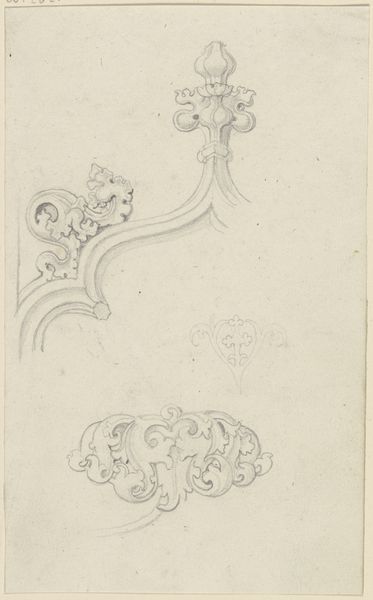
Ontwerp voor titelpagina voor: Stijn Streuvels, Reinaert de Vos, 1910 c. 1910
0:00
0:00
drawing, graphic-art, print, ink, pencil, woodcut
#
drawing
#
graphic-art
#
aged paper
#
light pencil work
#
art-nouveau
#
homemade paper
#
narrative-art
# print
#
sketch book
#
personal journal design
#
figuration
#
personal sketchbook
#
ink
#
fading type
#
pencil
#
woodcut
#
symbolism
#
sketchbook drawing
#
storyboard and sketchbook work
#
sketchbook art
Dimensions: height 273 mm, width 206 mm
Copyright: Rijks Museum: Open Domain
Editor: Here we have Bernard Willem Wierink's design for the title page of Stijn Streuvels' "Reinaert de Vos," made around 1910, with ink, pencil, and woodcut. The subdued tones and delicate lines give it an antique, almost ethereal feel. What social and historical influences do you think shaped this artwork? Curator: Well, consider the context. Around 1910, Art Nouveau and Symbolism were clashing with emerging modernist movements. Wierink's piece, while seemingly whimsical with its animal figures, subtly engages with themes of power, class, and cunning—characteristics embodied by the fox in the medieval tale, Reinaert. The positioning of the lion above, surrounded by other animals, hints at a societal hierarchy, doesn’t it? What power dynamics do you observe? Editor: I see what you mean. The fox at the bottom, almost centered, but definitely *below* the lion...it suggests a kind of subservience or perhaps aspiration. The aged paper makes me wonder, was this intended to evoke a sense of historical continuity, linking back to medieval fables in a time of rapid social change? Curator: Exactly. This visual connection to the past provided a framework for critiquing the present. The fox, as a symbol, embodies both the vulnerability and the subversive potential of marginalized groups. How does the work negotiate these complex social anxieties of the early 20th century, do you think? Editor: I hadn't considered the fox as a symbol of the marginalized! Looking at it that way, it's like the design isn't just illustrating a story; it's commenting on society. Curator: Precisely. The seemingly innocent illustration opens a dialogue about power, resistance, and social commentary. It urges us to see these historical visual structures, and to challenge them even now. Editor: This makes me rethink the relationship between art and activism, and the hidden messages within art. Curator: Indeed, the sketch invites viewers to look closer at familiar tales and unravel the layered power dynamics ingrained in their historical visual presentation.
Comments
No comments
Be the first to comment and join the conversation on the ultimate creative platform.
